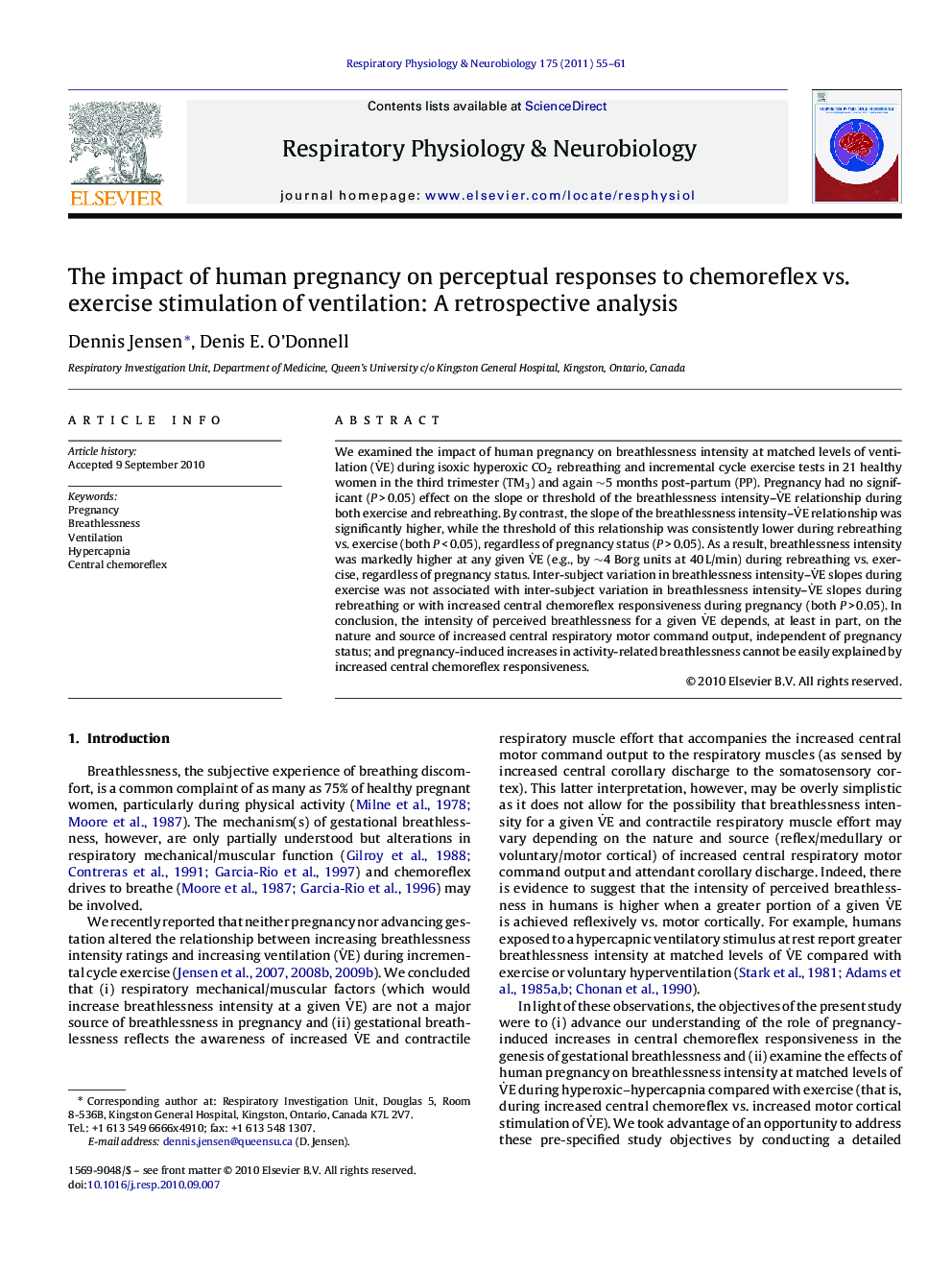| Article ID | Journal | Published Year | Pages | File Type |
|---|---|---|---|---|
| 5926559 | Respiratory Physiology & Neurobiology | 2011 | 7 Pages |
We examined the impact of human pregnancy on breathlessness intensity at matched levels of ventilation (VËE) during isoxic hyperoxic CO2 rebreathing and incremental cycle exercise tests in 21 healthy women in the third trimester (TM3) and again â¼5 months post-partum (PP). Pregnancy had no significant (PÂ >Â 0.05) effect on the slope or threshold of the breathlessness intensity-VËE relationship during both exercise and rebreathing. By contrast, the slope of the breathlessness intensity-VËE relationship was significantly higher, while the threshold of this relationship was consistently lower during rebreathing vs. exercise (both PÂ <Â 0.05), regardless of pregnancy status (PÂ >Â 0.05). As a result, breathlessness intensity was markedly higher at any given VËE (e.g., by â¼4 Borg units at 40Â L/min) during rebreathing vs. exercise, regardless of pregnancy status. Inter-subject variation in breathlessness intensity-VËE slopes during exercise was not associated with inter-subject variation in breathlessness intensity-VËE slopes during rebreathing or with increased central chemoreflex responsiveness during pregnancy (both PÂ >Â 0.05). In conclusion, the intensity of perceived breathlessness for a given VËE depends, at least in part, on the nature and source of increased central respiratory motor command output, independent of pregnancy status; and pregnancy-induced increases in activity-related breathlessness cannot be easily explained by increased central chemoreflex responsiveness.
